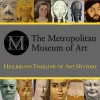Take a look inside 5 images
Heilbrunn Timeline of Art History
Pros: It provides a big-picture view of artistic influences and eras as well as detailed descriptions of nearly every art movement.
Cons: Reading is the main activity; without any bells and whistles to excite kids, they may get bored fast.
Bottom Line: This resource from the Metropolitan Museum of Art beautifully illustrates art's evolution and is great for research, but more interactivity would help balance out the text-heavy content.
Because it centers primarily on reading, you may find this site is best for individual use -- for homework assignments, research projects, etc. However, you can definitely share and discuss key pieces of art with your class on a whiteboard. The site's content provides a look at how key events and people affected art in different eras, which could work in a history class as well as for more art-focused subjects. You can show and compare artistic works that show influence from other periods or build on individual reading assignments with in-class work, like asking students to identify signature elements in Dali's paintings.
The Met's main site also offers additional resources, including the online portion of its Thomas J. Watson research library. An educator section has nearly 100 elementary, middle school, and high school lesson plans; teachers can also purchase illustrated publications.
The Metropolitan Museum of Art's Heilbrunn Timeline of Art History highlights the New York-based museum's extensive collection, ranging from 8,000 B.C. to current-century fashion. Its content is written by Met curators, conservators, scientists, and educators and includes 930 essays and nearly 7,000 objects to view.
You can locate artwork from a certain region by clicking on a world map; select an era on a timeline, or search for specific pieces by entering qualifications like name, artist, material, or technique. A Thematic Essays section features written background and slideshows of different styles, movements, artists, and time periods. You can also select a general category, department, geographical region, or time to find what you're looking for. For example, under the category American Art, you can find anything from "Coffee, Tea, and Chocolate in the Colonial Era" to the Bikini. An index also links to sections on artistic styles, regions, and other classifications.
The site's structure makes finding specific items fairly easy; it can also help you obtain a sense of how different eras, artists, and movements influenced each other. Weaving historical events into its written content, the site helps kids pick up some bonus social studies knowledge. Some sections -- such as Africans in Ancient Greek Art -- feature almost as much trading and population pattern background as art information.
Unfortunately, you won't find many options for interactivity here; the Heilbrunn Timeline involves a lot of reading. The site would have a better chance of engaging kids if it offered quizzes, videos, or other more dynamic elements. (Scrolling through pages of small text can overwhelm all but the most interested kids.) However, kids can use its well-written, comprehensive content for schoolwork-based research, to gain an understanding of how art has evolved over time, or they can just use the site to explore some really cool art movements and works.











